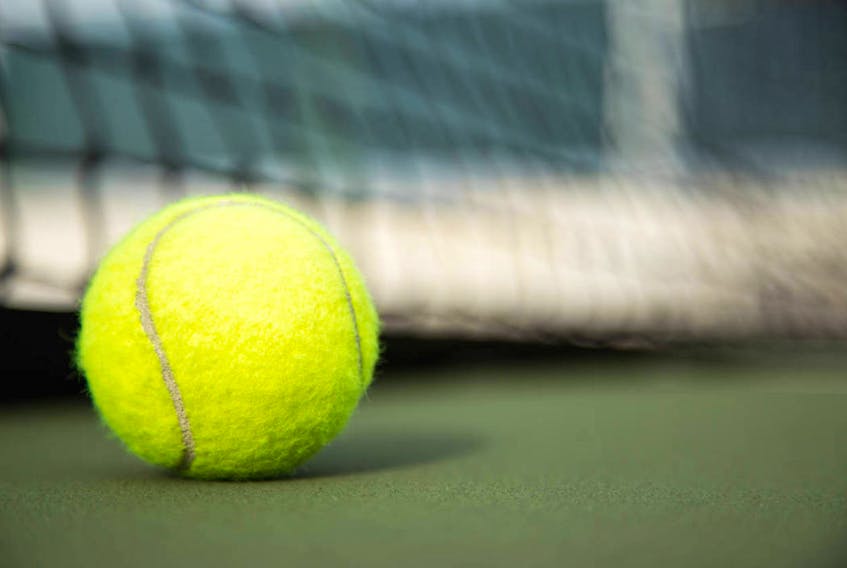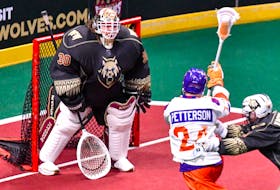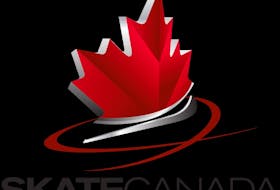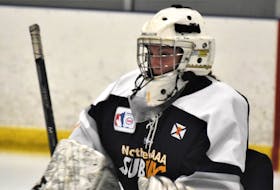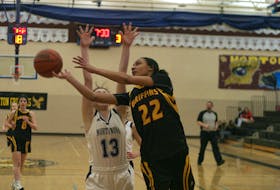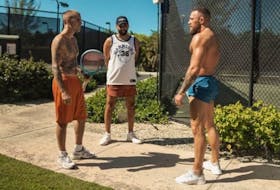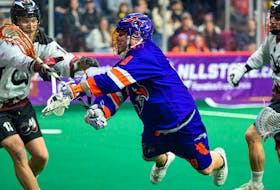A little more than three years ago at the sprawling U.S. National Tennis Center in New York, a long-time tennis writer for a big American publication stood up from his desk and said he was going to watch a young teen phenom play.
He said the kid’s name was Felix, and then he tried the last name, but it sounded like he had choked on his food while trying to pronounce it. Or had a stroke. He gave up. “F-A-A,” he said. “He’s Canadian.”
Felix Auger-Aliassime would go on to lose that match in the U.S. Open junior draw to an American three years his senior, but it was an arrival, of sorts, on the big stage. The small outer court was packed with tennis insiders: scouts, sponsors, reporters who had heard about the lithe 15-year-old who was already being talked about as a potential superstar in a sport that for ages had been dominated by the same familiar names.
That scene in Flushing Meadow is worth mentioning because while it might seem like Canada has arrived on the world stage as a tennis power with shocking speed, thanks to the wild rise of three remarkable teenagers, this country’s promise has been building for a while now. It just happens to have exploded in unison, with Auger-Aliassime, 18, storming into the upper levels of the world rankings to join his close friend Denis Shapovalov, and both of them threatening to match the feat of Bianca Andreescu, 18, who won her first top-tier WTA title two weeks ago and sports a gaudy 25-4 match record in 2019.
Shapovalov and Auger-Aliassime this week each made the semi-finals of the Miami Open, a tier just below the Grand Slams, the first time two teens made the semis of a tournament of that level in more than a dozen years. And both are Canadian.
Canada, land of hockey and curling, freestyle skiing and snowboarding, a mighty tennis nation?
“It puts a lot of belief in tennis in Canada,” Auger-Aliassime said in Miami off all the maple-flavoured success. “I think all the Canadian players, from the young kids to Denis and Bianca and I, there is a lot of belief right now, so it’s great to see.”
“It is,” says Tennis Canada chief executive Michael Downey, “very surreal.”
It is that. But it is also real. Shapovalov was the first to burst on to the scene with a run to the 2017 Rogers Cup final in Montreal in which he beat tennis demi-god Rafael Nadal. After he beat the then-world number one, Shapovalov went back to Auger-Aliassime’s home, where he was staying for the week. He has said he tried to come in quietly, afraid to wake his friend who had early practice the next morning, but then heard Felix, who had a Nadal poster on his bedroom wall, come bounding down the stairs to celebrate in the family kitchen.
Shapovalov rose from 250th in the ATP rankings at the start of the 2017 season to inside the top 50 by that fall. His compatriots have since mimicked that rapid ascent.
ndreescu was outside the top 200 in the WTA rankings a year ago, but she closed the 2018 season strong and carried that into this winter, rising into the top 25 after her win in California. Auger-Aliassime was ranked 178th on the ATP Tour a year ago — and 378th just two years ago — but will be inside the top 35 after Miami, which followed a finals berth in Brazil this month.
So, what happened? Is it something in the water? First, there are some evident similarities between the Canadian stars. Shapovalov was born to Russian parents in Tel Aviv and Andreescu was born in Romania, while Auger-Aliassime has a Quebecois mother and Togolese father. Tennis is a huge sport in Europe, and as with Milos Raonic, the relative grand old man of Canadian tennis who also has old-country roots, the kids were less likely to be tossed into hockey once they showed athletic promise.
But Downey also points to Raonic, the former Wimbledon finalist who at 28 is still a top-20 player, as a big reason for the new generation’s success. Once Raonic and his thunderbolt serves started winning tournaments in 2011, it was the first time a Canadian had success in singles tennis in decades. “It gave the next generation of Canadian players a sense of confidence that they could belong,” Downey says. “This was someone they had seen training at the National Tennis Centre in Montreal,” he says. “They could relate to Milos.” Eugenie Bouchard followed a couple years later with her run through the Grand Slam season in 2014, Raonic was in the Wimbledon final in 2016, and suddenly Canadians didn’t have to wonder whether they could fight for the world’s biggest tennis titles. They were already doing it.
“They all talk about Milos,” Downey says. “You ask Felix, you ask Denis, you ask Bianca. They were all about 10 years old when he had that breakthrough. That gave them a sense of inspiration.”
That confidence, though, was also backed with resources. Tennis Canada began to put millions of dollars into its high-performance program about a decade ago, with Raonic moving to Montreal from the Toronto suburbs as one of the first test cases of the emphasis on developing elite athletes. Auger-Aliassime was nurtured in the national program in Montreal, while Andreescu, who lives in Mississauga, trained at Tennis Canada’s regional centre in Toronto. Shapovalov was largely taught by his tennis-pro mother, although he has worked in recent years with Tennis Canada coach Martin Laurendeau. Different paths for all of them, each of which has resulted in playing on the sport’s big stages, at the same time, at a young age.
Auger-Aliassime is the highest-ranked under-19 man in the world, and Shapovalov is the highest-ranked under-20 man. Andreescu, and you can probably guess where this is going, is the highest-ranked woman under 19 (and also under 20).
Auger-Aliassime lost on Friday afternoon to American giant John Isner and his booming serves. The Canadian took a lead in each of the two sets, but wobbled and lost both in tiebreakers. There’s now no chance he will face his pal Denis in the Miami final, with Shapovalov facing his idol Roger Federer in the semi-finals on Friday evening.
So, no all-Canadian final. Not this time. “It’s going to happen,” says Downey. “It absolutely is.”
Such confidence, from a Canadian tennis executive. It isn’t even misplaced.
• Email: [email protected] | Twitter: scott_stinson
Copyright Postmedia Network Inc., 2019

